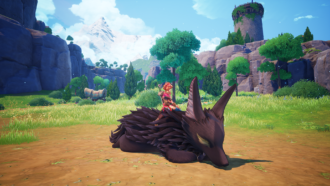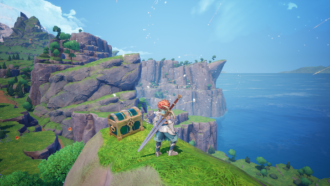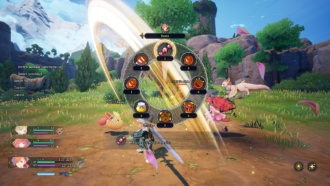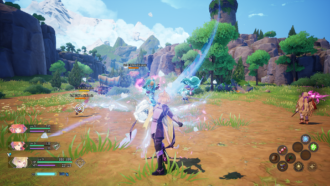Platforms:
PS4, PC, PS5, Xbox Series X|S
Released:
August 29, 2024
Publisher:
Square Enix
Developer:
Square Enix
I get the sense that Visions of Mana is a big deal for Square Enix. This is a franchise that’s been around since the 90s, but Visions is only the 5th game in the core mainline series (the 4th, Dawn of Mana, came out in 2007 for the PS2). I was hesitant going in since Square’s previous attempt to revive a long-dormant franchise didn’t go so well. Thankfully, Visions of Mana is a success story in that it is exactly the kind of RPG I’m into. You’ve got delicious mechanical systems, luscious art design and visuals, a narrative that doesn’t rest on its laurels and a variety of things to do. This big-budget reboot may not be for everyone, but it’s a wonderful evocation of old-school Super Nintendo RPGs the likes of which we haven’t seen at this scale in a long time.
As I explained in my preview, the story takes some initial cues from Tales of Symphonia and Final Fantasy X and takes it in a different direction. Our hero is Val, the Soul Guard, tasked with leading the 8 Elemental Alms – one of which being his best friend Hinna – on a pilgrimage to the Mana Tree where they will sacrifice themselves to stave off environmental catastrophe for another 4 years. This is a tale of duty and mortality. Some characters do what they can without caring what happens to themselves, while some do what they want without caring what happens to others. You may see certain plot revelations coming from a mile away based on the premise alone, but I was surprised by these twists coming far earlier than expected, leaving characters in a place where they have to process them and keep going. Each Alm is chosen for a reason, and the story smartly focuses on how the Alms actually feel about it. The fact that all the main characters are under a lot of pressure right from the jump helps you care what happens to them. It helps that the party have a great rapport with each other, and love to chat while you’re out exploring the world. A quality of life feature I adore is that these short conversations continue into combat.
The world of Visions of Mana is separated into multiple zones interconnected via loading screens, consisting of towns, field areas, and dungeons. Very few areas are optional throughout the journey, but some areas feature ruins or hideaways with enemies several levels higher than yours, hinting that you should come back later. Each location features hidden treasures and other collectibles. Most of the field environments are massive, and would take a lot of time to cross on foot. Thankfully, you get the chance to summon your own Pikul early in the story. Pikuls are adorable fox-like creatures the size of minivans, who you ride throughout large areas at great speed. Pikuls can be summoned and dismissed at any time and enemies don’t bother them, so they’re a great option to get somewhere fast while still having fun. You’re able to fast travel to previously-reached landmarks and save points in your current zone at any time, and fast travel to other zones at save points, so there are lots of ways to get around Visions of Mana.
NPCs exist throughout the world, more densely in towns and cities, some of whom can offer you sidequests. Sidequests are not the most convenient to find, since you need to examine each map to see if a quest marker is present, but once accepted they’re tracked very easily. Multiple markers show up on the map or the world around you showing where a quest objective is, and where to return to complete it. The quests themselves are rarely interesting. Most involve finding a hidden object within a radius, killing a specific enemy, or gaining a certain number of items from enemy drops that are only available after you accept the quest, so even if it’s a monster you’ve fought before you have to fight them again. One of the better sidequest chains has you find specific vistas based on blurry images, making use of how unique these areas are. But even the less interesting quests encourage you to explore more of the world. Plus, quests are the primary way to make money, which you need to upgrade your character’s armour and weapons. Each character has 3 weapon types, and the type currently in use is dictated by their class, so it’s important to keep your equipment topped up.
Combat and traversal all make use of the 8 Elemental Vessels, artefacts that let you manipulate their corresponding elements in specific ways. In combat, Vessels can be used as temporary abilities that can change the tide of battle, and they unlock a new set of classes for each character, per element. This means there are a whopping 45 classes in the game (including everyone’s base class), and each one broadly behaves differently with different abilities. The Vessels also let you traverse the environment in unique ways. It’ll be a long time before the story gives you all eight Vessels, and with each Vessel comes a multitude of gameplay options, so you are never want for new mechanics to play with during your adventure.
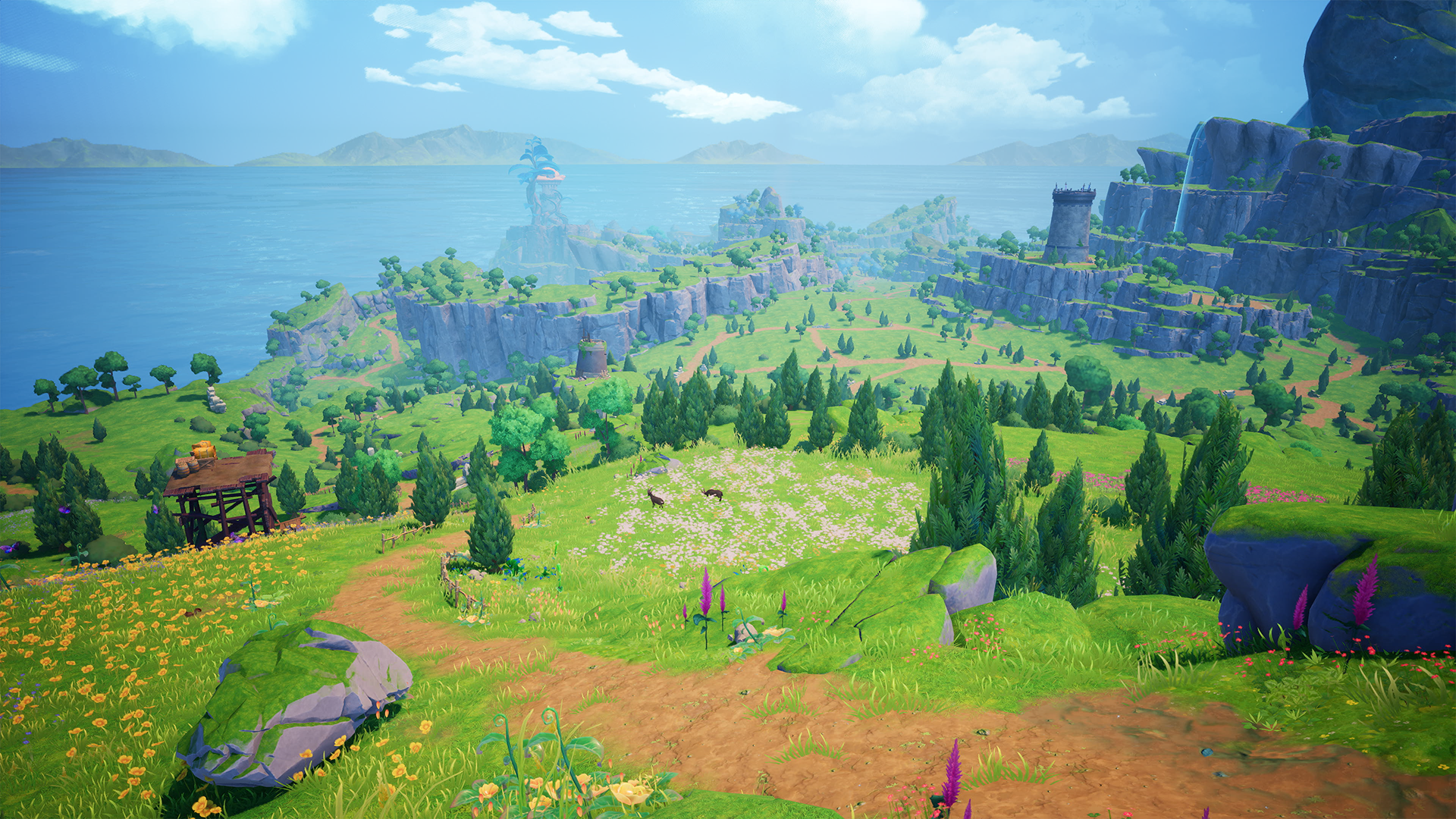
Even after getting all 8 Vessels, I never got tired of switching classes and characters around in my 3-person battle party, playing around with what combinations they produce. It helps before venturing into a dungeon to talk to nearby NPCs, as they may give you hints about the elemental weaknesses of upcoming bosses, which helps you narrow down your choices. You’ve also got access to ability seeds to find or purchase that can grant each character extra active or passive skills. Ability seeds are helpful in theory, but considering how often I switched everyone’s classes – which is encouraged – it eventually became tedious to switch ability seeds out to match whatever element each character is currently aligned with, especially as each character can grow to hold more seeds each. I learned to focus on the kinds of seeds I didn’t need to switch out, and ignored them from then on unless I got powerful seeds later.
Combat is chunky without getting clunky. Or to use less annoying language, you’re always in control even as you’re locked into attack animations or spell-casting times. Combat can get hectic when you’re swarmed by weaker enemies or facing a giant boss you need to double jump to reach the weak point of. If you’re knocked down, it takes a suspiciously long time for your character to get up, which I assume is the game’s way of encouraging you to switch your characters as much as possible. This is the best kind of chaos if, like me, you switch their classes around a lot too.
The game’s dungeons all revolve around solving puzzles or platforming. It’s a shame they’re all quite linear; only one dungeon comes reasonably close to Zelda-level complexity, otherwise, they’re all straightforward and only use their large spaces for enemies and treasures. Still, they’re all varied, each one has you using the Elemental Vessels in a unique way, be it conjuring bubbles to hover with or summoning golems to do your temporary bidding.
Visions of Mana’s art design is stunning, and perhaps the most impressive thing about the game. Each and every location is meticulously crafted and detailed, from foliage density to the lighting. My particular favourite is a beautiful farmland perpetually at dusk, peppered with enemies, treasures, as well as houses with NPCs. The game’s jump button and general lack of invisible walls let you climb onto anything you think you might be able to reach, and you’re usually rewarded for the effort. I loved running around buildings and houses in some of the game’s denser cities, the way I used to in games like Final Fantasy XII when I was a kid. Despite the game’s cartoony aesthetic, I could picture myself living in this world. More so than Valkyrie Elysium, you can tell Visions of Mana has the full force of Square Enix’s budget behind it. No stone was left unturned; and if they were, it’s because they were gorgeous to begin with.
“The art design is stunning, and perhaps the most impressive thing about the game.”
Yes, it’s strange that everyone in this world looks like 11-year-olds with beards and rock-hard abs, but as a way to modernise the SNES aesthetic of the original games, it works. After a plethora of criticism towards how Charlotte’s voice was localised in Trials of Mana 2020, the major female characters in Visions of Mana talk like actual human women for the most part, but some NPCs still, unfortunately, suffer from Sexy Mickey Mouse Voice. It’s a plague that’s haunted English dubs of Japanese games for decades. Not unrelated is how the women of Visions dress. One particular party member wears distractingly revealing clothing, which is unsurprising for the genre but makes absolutely no sense for her character. All 9 of her class outfits show off her inner thigh. You get the sense that Visions of Mana is making an effort to tamp down these unfortunate tropes that have been associated with Japanese media for years, but it’s a bummer they’re there at all.
Playing while sitting away from a decent-sized TV reveals a prominent issue in the game: the subtitles and fonts. In a game this bright and colourful, white subtitles are very hard to read. There’s a faintly darkened background when you’re talking to NPCs, but there’s no such luck in cutscenes. I sometimes found myself rotating the camera to the floor so I could read properly against something dark. I’m personally a fan of chucking up a big black box that takes up a third of the screen if it means I can clearly understand what’s going on, and I wish Visions of Mana offered me a similar option.
8.5
Great
Positive:
- Elemental Vessels are loads of fun in and out of combat
- An absolutely gorgeous fantasy world
- Engaging drip feed of customisation options
- A compelling narrative
Negative:
- Subpar subtitles and fonts
- Ability swapping can get tedious
- Occasional disappointing voices and outfits on female characters
I hope Visions of Mana signals a new, brighter direction for the series. This is more than a classic series receiving a jaw-dropping glow-up. This is a game that gives you a classic JRPG experience while being a modern blockbuster through and through. It’s one of the best-looking games this generation and gives you dozens of unlockable options to customise your party your way. The story is deep and dark (for a PG title) and explores familiar themes in a new and engaging way. Visions of Mana confidently asserts its own spot among other long-running modern JRPGs, and I can’t help but agree. It’s proof that despite its age, this series still has a lot of potential left.
